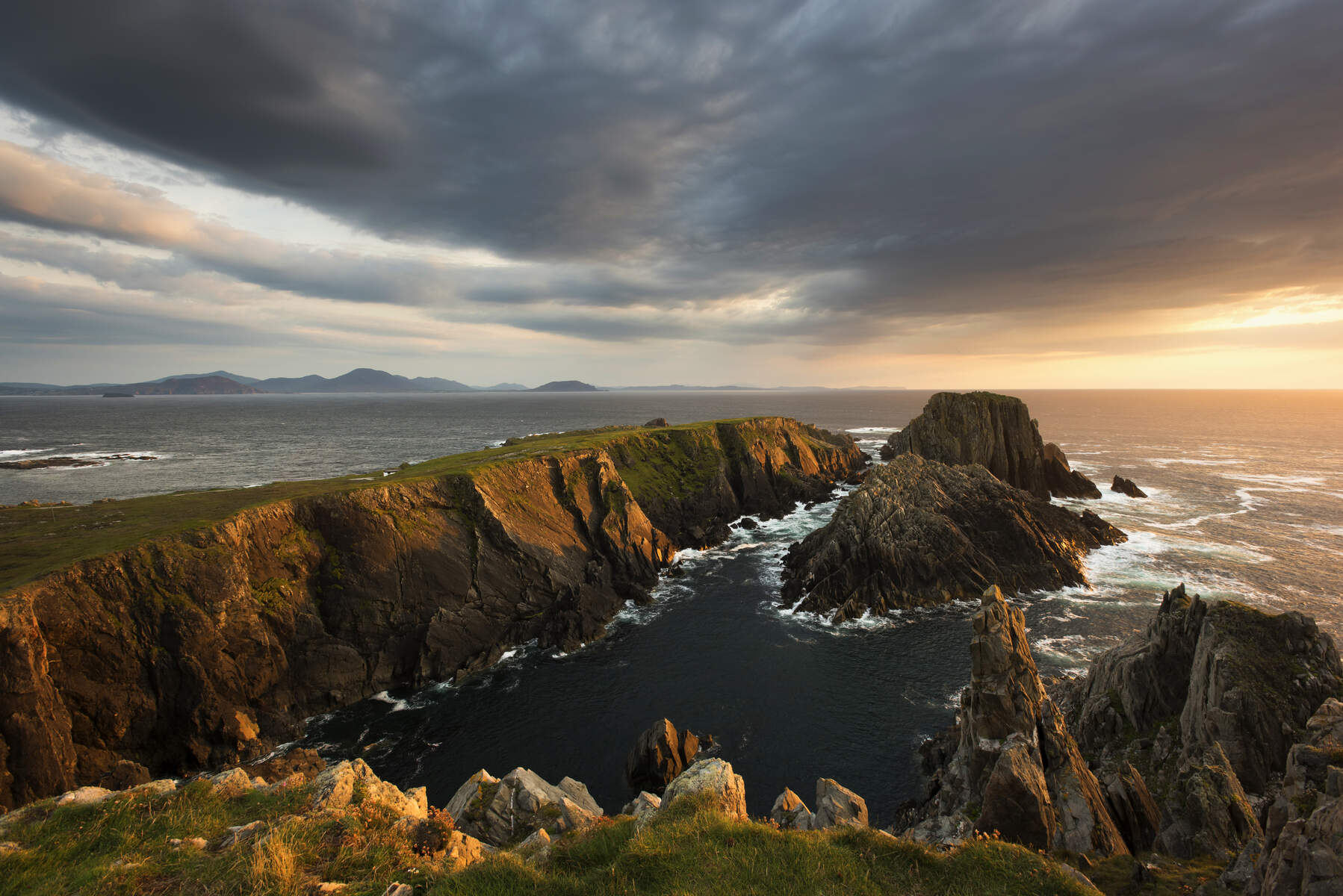By Felicity Hayes-McCoy
In that fine Ulsterman C S Lewis’s children’s book, The Voyage of the Dawn Treader, there’s a swashbuckling mouse whose dream is to reach the very end of the world, and a magic moment when he throws his sword into the sea and boldly sets out to follow his dream, wherever it may lead. The reader’s last glimpse of him is of a tiny silhouette against a huge, green wave which spills over the edge of the world into the unknown. I loved the Narnia books as a child and, looking back, I know that image buried itself in my unconscious. It may even have influenced the title of The Library at the Edge of the World, the first of my Finfarran novels, and it certainly surfaced when Wilf and I took a two-base trip to the Inishowen Peninsula.
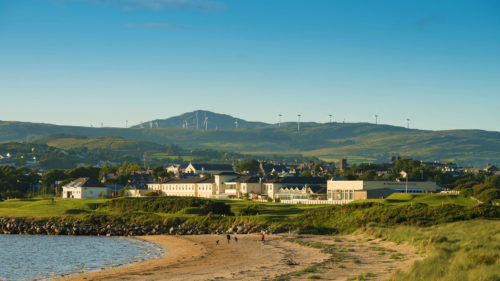
In Buncrana we stayed at The Inishowen Gateway, a family-run hotel overlooking Lisfannon Beach, Lough Swilly and Buncrana Harbour, which prides itself on offering guests “a warm Donegal welcome and the very best of hospitality”. It does all of that and more, and in a gorgeous setting. Between the hotel and the beach are the fairways of the nine-hole Buncrana Golf Club (complimentary to residents, subject to availability), so the view from our cosy room was a stretch of emerald green with golden sand and turquoise water in the distance. We ate in the restaurant, which must have one of the best views in Ireland, and the following morning, Aisling, who ushered us to our table, greeted us like old friends.
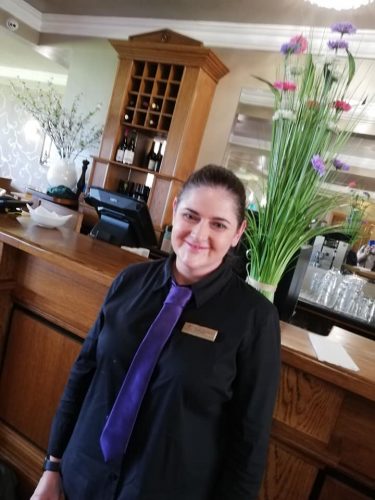
Buncrana has plenty to offer visitors. The North West Golf Club is two minutes from the hotel and just up the road at Ballyliffin is the host course of the 2018 Irish Open. Swan Park in the Historic Quarter has paths and woodland trails on both sides of the River Crana. While we were there, restoration work on the park was being completed, after severe damage by storm Ophelia in 2017, and it was evident that the €1.7 million from central government has been put to magnificent use. The Buncrana Angling Association controls the Crana river and nearby Fullerton reservoir, and runs its fishery from a purpose-built angling centre, where licences, permits and fishing tackle can be bought, and boats and rods hired. In October, a 2-day event/festival for all disciplines of kayaking (sea, lough and river) takes place on the river, and the general public can participate in short rafting trips. Close to where the river enters Lough Swilly, the park also encloses the remains of a 14th century Norman castle, once the seat of the area’s ruling chieftain.
The weather was a mixture of sunshine and showers as Wilf and I set off to find Malin Head, the most northerly point on the Wild Atlantic Way. It’s at the very furthest edge of the island of Ireland, and about 40 minutes’ drive from Buncrana. On the way we stopped at Fort Dunree where we could easily have spent a whole day. Towering over the entrance to Lough Swilly from the ocean, the fort was built by the British during the Napoleonic Wars as a coastal defence against French invasion, and enlarged during the late 19th century. After British rule in Ireland ended, it was used by the Irish army and, as we learned, in all that time its battery never fired a shot in anger. In fact, despite its military grandeur, Fort Dunree is one of Inishowen’s most tranquil locations. It’s now a museum, a community resource, a spectacular place to observe bird and marine life, and a unique, awe-inspiring, location for weddings, walks and picnics. Outlying buildings house changing art exhibitions, and the museum within the massive stone fort has permanent exhibits – one of which forefronts Ireland’s role in UN Peacekeeping – and audiovisual displays. Its curators are local and knowledgeable, and the museum shows a short, informative film in its little state-of-the-art cinema. Plus, there’s a stylish clifftop café with delectable, locally-made cakes and a staggering ocean view.
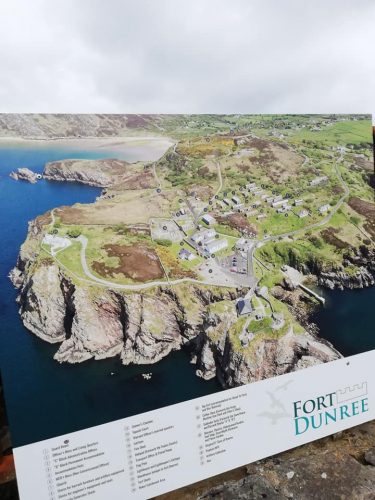
We drove on through remote mountainous scenery and climbed, in what felt like a storm-force wind, to the sign that officially marks Malin Head. There truly is something wildly romantic about this windswept spot where the local name “Banba’s Crown” evokes the name of an ancient Irish goddess, and stargazers gather to catch the magical Northern Lights. (Incidentally, according to an intrepid man who offered to take our photo, it wasn’t storm-force wind at all, just a stiff bit of a breeze.)
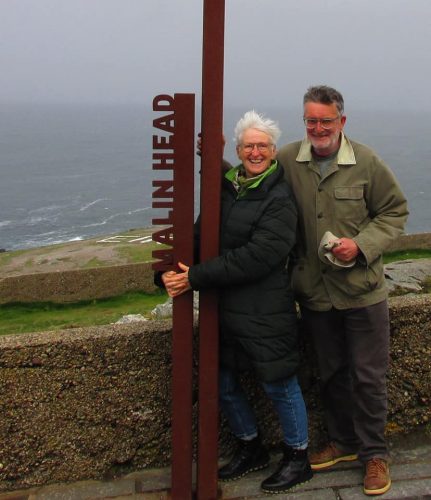
Then, having touched the edge of the world or, at least, the edge of Ireland, we took a different road on our return. It led us by mountains and glens to a low, whitewashed house where, as in all good stories, we had an unexpected wayside encounter. Ann McGonigle, owner of the Glendowen Traditional Craft Shop, invited us into her studio. Her late mother taught her to sew and crochet and, as well as other local and Irish crafts, the shop specialises in ladies’ Donegal tweed garments with a hand-crochet finish. The studio was a lovely place to linger, chatting about handcrafting and music, and being given a demonstration of weaving on a loom that a neighbour of Ann’s rescued from dilapidation and lovingly restored to working condition.
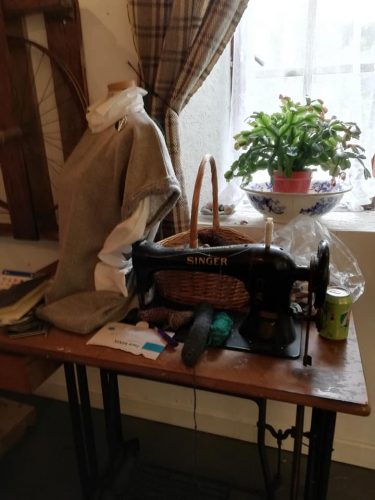
Then it was back to the Inishowen Gateway for an early dinner featuring fine local produce, and sumptuous desserts created by the in-house pastry chef. Later, we drove across the causeway to Lough Swilly’s Inch Island and took an evening walk in its Wildfowl Reserve, where birds sang, sheep grazed, migrant geese honked, and swans drifted on wide expanses of reed-fringed water. The island features an 8 km looped walk which also caters for runners and cyclists. The views are panoramic, there are two car parks, seating, viewpoints, and bird hides open to the public, and the levelled path is perfect for families and less-abled walkers.
We drove back as the sun set to a good night’s sleep in our comfortable bed and the prospect of another day’s adventures.
For more, see Inishowen Gateway Hotel
About The Author:
Felicity Hayes-McCoy is the author of the USA Today bestselling “Finfarran” novels, published by Hachette Irl, which have been translated into seven languages and are available in hardback, paperback, ebook and audiobook. Born and educated in Dublin, she built a successful London-based career, as an actor and then a writer. Her memoir The House on an Irish Hillside, published in 2012, continues to be read worldwide. A sequel Enough Is Plenty: The Year on the Dingle Peninsula, illustrated with her own photos, was followed by a second memoir, A Woven Silence: Memory, History and Remembrance.
Dingle and its Hinterland: People, Places and Heritage, a cultural guide to West Kerry, was co-written with her husband Wilf Judd with whom she divides life and work between rural Ireland and inner-city London.
For more Information, see Felicity Hayes-McCoy
